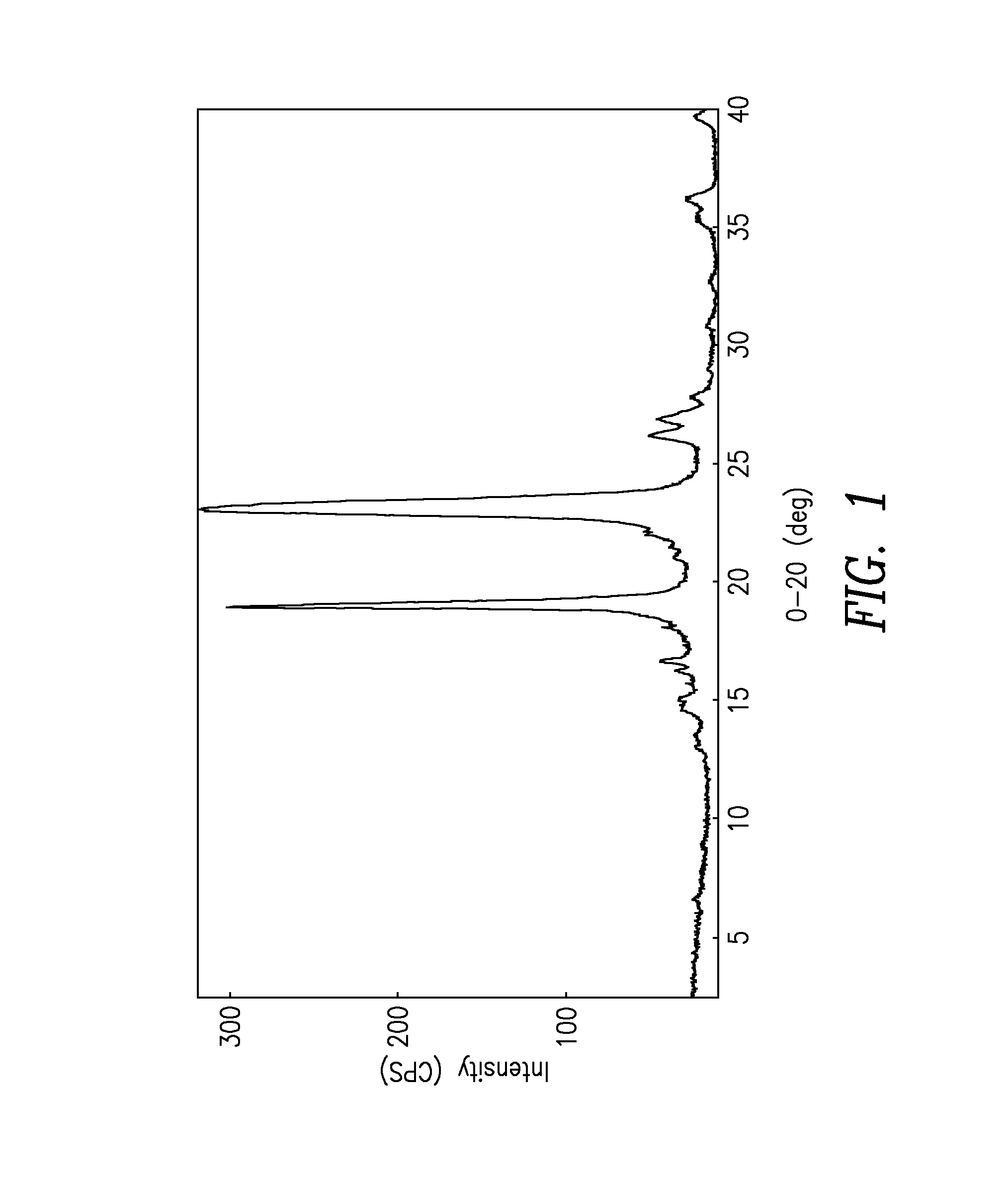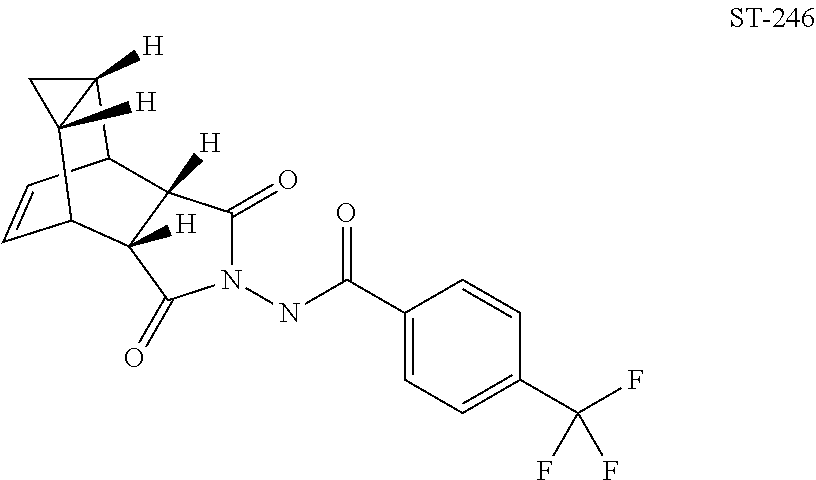Amorphous tecovirimat preparation
a technology of tecovirimat and tecovirimat, which is applied in the field of preparation of amorphous tecovirimat, can solve the problems of high mortality rate, high mortality rate, and inability to protect against recombinant forms of orthopoxvirus vaccination, so as to reduce dosage, avoid food effect, and fast dissolution rate
- Summary
- Abstract
- Description
- Claims
- Application Information
AI Technical Summary
Benefits of technology
Problems solved by technology
Method used
Image
Examples
example 1
Preparation of Amorphous ST-246 by Melting and Quench Cooling
[0070]Approximately 20 g ST-246 monohydrate (polymorph Form I) was dehydrated in a desiccator with Drierite under vacuum in a drying oven at 50° C. for 2 days to yield dehydrated ST-246.
[0071]In a glove box under a nitrogen atmosphere (RH<5%), 5.2 g dehydrated ST-246 was weighed into a beaker and was heated in a silicone oil bath with bath temperature maintained at 215° C. and held for 5 minutes or until material is completely melted, The beaker was removed from the silicone oil bath and was quenched immediately by immersing in liquid nitrogen. The beaker was held in liquid nitrogen for 1 minute, then immediately transferred to a glove box under a nitrogen atmosphere (RH<5%). Product was transferred from the glass beaker to an 10 mL amber glass bottle and sealed with PTFE lined cap. It was stored in a freezer at −20° C. Product was pale yellow in color, The yield was 5.1 g.
[0072]The quench cooled ST-246 was characterized u...
example 2
Preparation of Amorphous ST-246 by Melting
[0073]About 5.0 g ST-246 monohydrate was weighed into a 25 mL Pyrex test tube and placed in a silicone oil bath at ambient temperature. The silicone oil bath was heated to 210° C. over the course of 2 hours. Low flow nitrogen was delivered to the test tube using Tygon tubing during the heating process. When oil bath temperature reached 202° C., the ST-246 began to melt. ST-246 melted to a clear colorless liquid when the oil bath temperature reached 210° C. ST-246 was then removed from the heat and the test tube was immediately placed in an ice bath and held for 5 minutes while continuing to blow low flow nitrogen into the test tube. It was then removed from ice bath and transferred to a glove box under nitrogen atmosphere (<10% RH). The product was then transferred to an amber glass bottle sealed with PTFE lined cap. It was stored in a freezer at −20° C. The product was a glassy colorless solid.
[0074]The product was analyzed for purity, whic...
example 3
Preparation of Amorphous ST-246 by Melting and Quench Cooling
[0075]About 2.00 g of ST-246 monohydrate were added to a steel beaker and placed in a silicone oil bath at room temperature. The oil bath was heated and stirred using a stirring hot plate. The heated oil bath temperature reached 160° C. over the course of 2 hours followed by an increase to 205° C. over 25 minutes. ST-246 began to slowly melt when bath temperature reached 205° C. The bath temperature was then raised to 215° C. over the next 20 minutes. ST-246 was completely melted when the oil bath temperature reached 215° C. The beaker was then from the oil bath and placed in liquid nitrogen and held for approximately 1 minute. The product inside the beaker was yellow in color and immediately hardened. The beaker containing the product was then placed in a glove box under a nitrogen atmosphere (relative humidity less than 10%). The product was then transferred to an amber glass bottle and sealed with PTFE lined cap. The Yi...
PUM
| Property | Measurement | Unit |
|---|---|---|
| Temperature | aaaaa | aaaaa |
| Temperature | aaaaa | aaaaa |
| Temperature | aaaaa | aaaaa |
Abstract
Description
Claims
Application Information
 Login to View More
Login to View More - R&D
- Intellectual Property
- Life Sciences
- Materials
- Tech Scout
- Unparalleled Data Quality
- Higher Quality Content
- 60% Fewer Hallucinations
Browse by: Latest US Patents, China's latest patents, Technical Efficacy Thesaurus, Application Domain, Technology Topic, Popular Technical Reports.
© 2025 PatSnap. All rights reserved.Legal|Privacy policy|Modern Slavery Act Transparency Statement|Sitemap|About US| Contact US: help@patsnap.com


